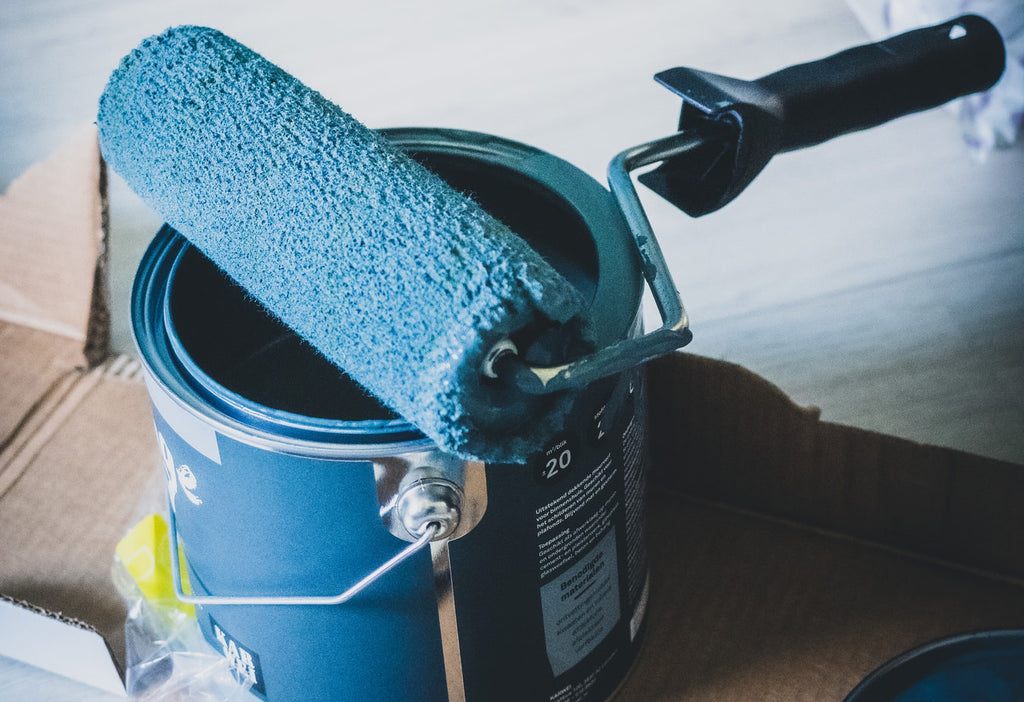
What’s REALLY in That Can of Paint?
Just about every surface you can think of gets coated– floors, walls, counter & table surfaces, fabrics & furniture, cars, covers, packaging, toys, phones, electronics, the list goes on and on. What we need to pay attention to, however, is what they are coated with, because these coatings of paint, varnishes and sealants are what we are in daily contact with, and we absorb them and what they’re made of into our bodies, whether we want to or not.
Coatings have a very practical job – to protect. We make them tough, durable, and as non-penetrable as we can, hoping to keep fingerprints, oils, stains, children’s crayons & markers and foods at bay. They keep surfaces safe from too much sun fade & rain exposure. Sometimes we put them on with a glossy finish, sometimes with no look at all. You might have heard the slogans - ‘tough enough to skate on’ or ‘we’ll leave the surface on for you’ or ‘ the shine that never gives up’ or ‘tough tough toys for tough tough boys’ - well they all speak to attributes of strength and force and durability. Yet something has to be put into these coatings to make them perform this way.
Enter the high performance chemicals that give paint and coatings attributes like viscosity and opacity and long-lasting coverage with quick drying. But it is important to recognize that there is a real downside -- they may contain volatile organic compounds (VOC’s) and give off unwanted and hazardous fumes with serious potential consequences to our health:
Benzene – used as a starting material to make plastics, resins, synthetic fibers, rubber lubricants, dyes, detergents, drugs, paint, pesticides. Exposure is high for people in closed spaces with unventilated fumes –like from solvents, paints, even art supplies. Benzene is known to cause cancer.
Ethylene Glycol – an odorless colorless chemical with a sweet taste that is used in many household products like paint, antifreeze, detergents, de-icing products, even cosmetics. However it is poisonous if swallowed and can cause, brain, lung liver and central nervous system damage.
Napthalene – used as a fumigant in mothballs and as a solvent in paint and resins. Also the major constituent of creosote, a preservative used in the lumber industry. Naturally present in fossil fuels, it is produced when wood or tobacco is burned. Long term exposure can lead to liver and kidney damage, and cataracts in some.
Ammonia – used as a drying agent and stabilizer to prevent the paint from drying too fast, but can cause eye, skin, lung irritations, even trigger asthma.
Formadehyde – known as a preservative, used in coatings to lengthen their shelf life. Can cause eye, nose, throat irritations, also known to be carcinogenic.
These are but a few - there's also acetone, methyl alcohol, kerosene, trichlorethylene, phenol....
So how do we paint our homes, finish our furniture & coat our products safely without harming our health?
- Learn about the chemicals that should be avoided.
-
Choose non-toxic products with the least amount of volatile organic compounds (VOC’s) in them.
-
Read the labels carefully to check that the above mentioned chemicals aren’t included in the ingredients. If we use products with chemicals included we make sure we are applying them in well ventilated spaces and follow the directions for proper preparation, application, storage, and maintenance.
- Buy one of the healthier coating lines - Look for brands like AFM SafeCoat, Ecos Paints, Benjamin Moore's Natura, Envirosafe Paint, Bioshield, Clare Paint, Earth Pigments. Some of these coatings have been produced for over thirty years, and formulated with health in mind - 100% non-toxic paint for the chemically -sensitive and the allergy-challenged. Unlike many companies manufacturing traditional coatings who simply reduce the amount of chemical in their formulations, many of these brands have completely new formulations that are 100% solvent free, even when tinted.
Take the worry out of your paint projects and decisions. Buy from companies who make choosing coatings safe for you from the start.

